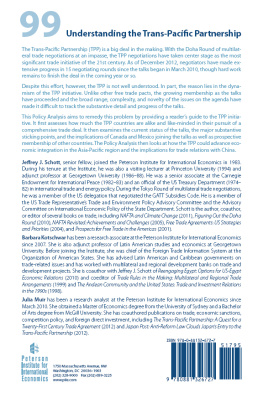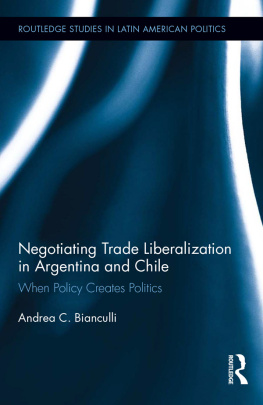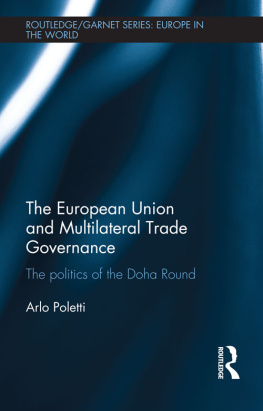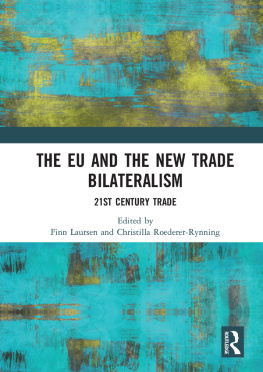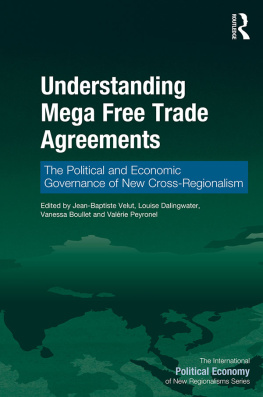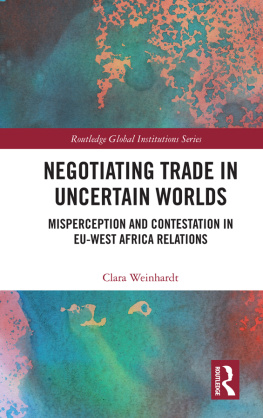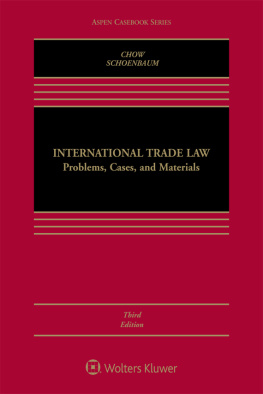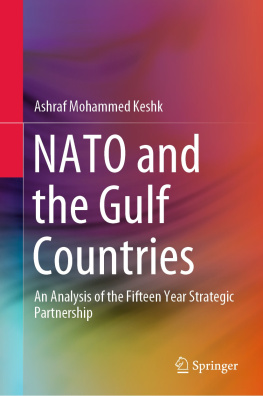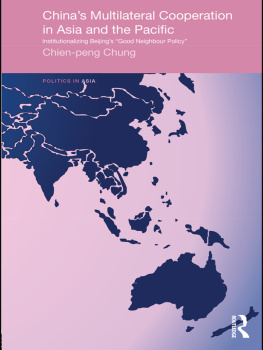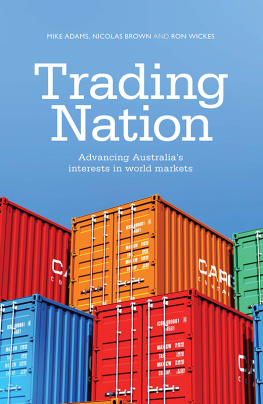Understanding the
Trans-Pacific Partnership
Jeffrey J. Schott, Barbara Kotschwar,
and Julia Muir
Understanding the
Trans-Pacific Partnership
Jeffrey J. Schott, Barbara Kotschwar,
and Julia Muir

Jeffrey J. Schott, senior fellow, joined the Peterson Institute for International Economics in 1983. During his tenure at the Institute, he was also a visiting lecturer at Princeton University (1994) and adjunct professor at Georgetown University (198688). He was a senior associate at the Carnegie Endowment for International Peace (198283) and an official of the US Treasury Department (197482) in international trade and energy policy. During the Tokyo Round of multilateral trade negotiations, he was a member of the US delegation that negotiated the GATT Subsidies Code. Since January 2003, he has been a member of the Trade and Environment Policy Advisory Committee of the US government. Schott is the author, coauthor, or editor of several books on trade, including NAFTA and Climate Change (2011), Figuring Out the Doha Round (2010), NAFTA Revisited: Achievements and Challenges (2005), Free Trade Agreements: US Strategies and Priorities (2004), and Prospects for Free Trade in the Americas (2001).
Barbara Kotschwar has been a research associate at the Peterson Institute for International Economics since 2007. She is also adjunct professor of Latin American studies and economics at Georgetown University. Before joining the Institute, she was chief of the Foreign Trade Information System at the Organization of American States. She has advised Latin American and Caribbean governments on trade-related issues and has worked with multilateral and regional development banks on trade and development projects. She is coauthor with Jeffrey J. Schott of Reengaging Egypt: Options for US-Egypt Economic Relations (2010) and coeditor of Trade Rules in the Making: Multilateral and Regional Trade Arrangements (1999) and The Andean Community and the United States: Trade and Investment Relations in the 1990s (1998).
Julia Muir has been a research analyst at the Peterson Institute for International Economics since March 2010. She obtained a Master of Economics degree from the University of Sydney and a Bachelor of Arts degree from McGill University. She has coauthored Peterson Institute publications on trade, economic sanctions, competition policy, and foreign direct investment, including The Trans-Pacific Partnership: A Quest for a Twenty-First Century Trade Agreement (2012) and Japan Post: Anti-Reform Law Clouds Japans Entry to the Trans-Pacific Partnership (2012).
PETER G. PETERSON INSTITUTE FOR INTERNATIONAL ECONOMICS
1750 Massachusetts Avenue, NW
Washington, DC 20036-1903
(202) 328-9000 FAX: (202) 659-3225
www.piie.com
C. Fred Bergsten, Director
Edward A. Tureen, Director of Publications, Marketing, and Web Development
Copyediting by Madona Devasahayam
Printing by United Book Press, Inc.
Copyright 2013 by the Peter G. Peterson Institute for International Economics. All rights reserved. No part of this book may be reproduced or utilized in any form or by any means, electronic or mechanical, including photocopying, recording, or by information storage or retrieval system, without permission from the Institute.
For reprints/permission to photocopy please contact the APS customer service department at Copyright Clearance Center, Inc., 222 Rosewood Drive, Danvers, MA 01923; or email requests to:
Printed in the United States of America
15 14 13 5 4 3 2 1
Library of Congress Cataloging-in-Publication Data
Schott, Jeffrey J., 1949
Understanding the Trans-Pacific Partnership / Jeffrey J. Schott, Barbara Kotschwar, and Julia Muir.
pages cm
Includes bibliographical references and index.
ISBN 978-0-88132-672-7
eISBN: 978-0-88132-673-4
1. Free tradePacific Area. 2. Pacific AreaCommercial policy. 3. Pacific AreaForeign economic relations. 4. Trans-Pacific Strategic Economic Partnership Agreement (2005) I. Kotschwar, Barbara. II. Muir, Julia, Research analyst. III. Title.
HF2570.7.S23 2012
382.911823dc23
2012048662
The views expressed in this publication are those of the authors. This publication is part of the overall program of the Institute, as endorsed by its Board of Directors, but does not necessarily reflect the views of individual members of the Board or the Advisory Committee.
Contents
Tables
Preface
Twenty years ago, I chaired the Eminent Persons Group (EPG) established by the leaders of the Asia Pacific Economic Cooperation (APEC) forum to develop a long-term vision for economic integration in the region. Our recommendations spurred APEC leaders at their meetings in Seattle in 1993 and then in greater detail in Bogor, Indonesia in 1994 to call for free and open trade and investment in the region by 2010 for developed countries and 2020 for developing countries. President Bill Clinton famously said at the time that it was an easy commitment for the leaders to make because they would all be long gone from office by those target dates (though the Sultan of Brunei, then 48, demurred and indicated that he fully expected to still be around at least that long!).
Progress toward the Bogor goals has proceeded in fits and starts and obviously missed at least their initial deadline. But the seeds of a Free Trade Area of the Asia Pacific (FTAAP) began to take serious root about a decade ago, with proposals from APECs Business Advisory Council, and now have multiple green shootsthe biggest and sturdiest of which is the ongoing negotiation of the Trans-Pacific Partnership (TPP). The United States and ten other countries are currently negotiating the TPP with the ultimate goal of extending its membership more broadly across the Asia-Pacific region. The eleven countries have a combined GDP of $21 trillion, or 30 percent of global GDP, and together export more than $4 trillion of goods and services. As the authors of Understanding the Trans-Pacific Partnership point out, the TPP already is a big deal and has great potential for becoming much bigger.
This Policy Analysis offers a broad overview of the prospective TPP, a comprehensive trade initiative that still is not well understood. Part of the reason lies in the breadth and scope of the projected pact. The TPP comprises 29 chapters that aim to substantially reduce trade barriers as well as expand the trade rulebook, and the broad range of issues on the table and their depth make it difficult to follow the substantive detail and track the progress of the talks. Also confusing is the fact that, unlike other free trade negotiations, the TPP has seen the number of participants increase during the course of the talks, with further enlargement possible before the final deal is closed. Adding new players clouds the picture of the prospective accord for insiders and outsiders alike because each change requires negotiators to recalibrate their potential gains and losses.
We hope this new study will provide some clarity and insight on the content and the implications of the TPP negotiations for Asia-Pacific nations and the world trading system as a whole. To that end, the authors assess the current status of the talks and explain in detail the main substantive sticking pointsranging from longstanding differences over market access reforms in agriculture and textiles to differences in approaches towards complicated and evolving issues such as trade in services, intellectual property rights, and other new economy topics. Putting the final TPP deal together will require trade officials to confront deep-rooted protectionist practices and implement regulatory reforms and new disciplines on investment, competition policy, and state-owned enterprises, among others. The authors also look ahead to how the TPP could advance broader economic integration in the Asia-Pacific region, and in particular the implications for trade relations with China.
Next page
